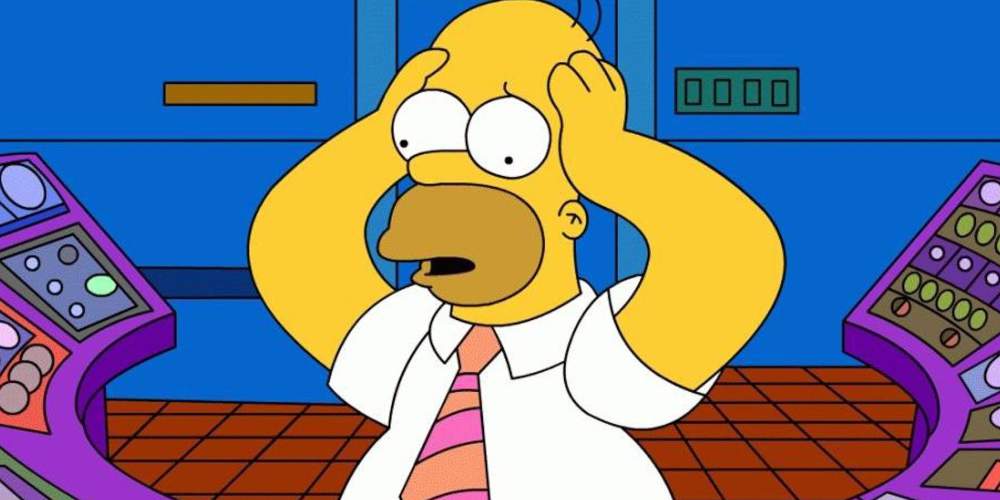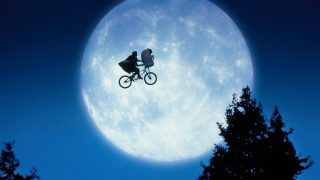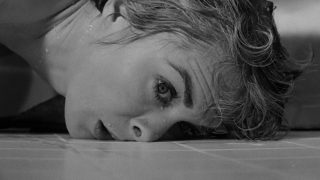The Simpsons has been an absolute goldmine of pop culture immersion ever since its debut in 1989.
From celebrity cameos to famous film quote references, Matt Groening's iconic cartoon loves paying homage to classic movies, modern movies, and everything in between. There have been so many subtle nods over the show's hundreds of episodes and dozens of seasons.
Were you able to spot them all? Here are some of our favorite movie references in The Simpsons, ranked for your convenience.
12. Lisa's Pony
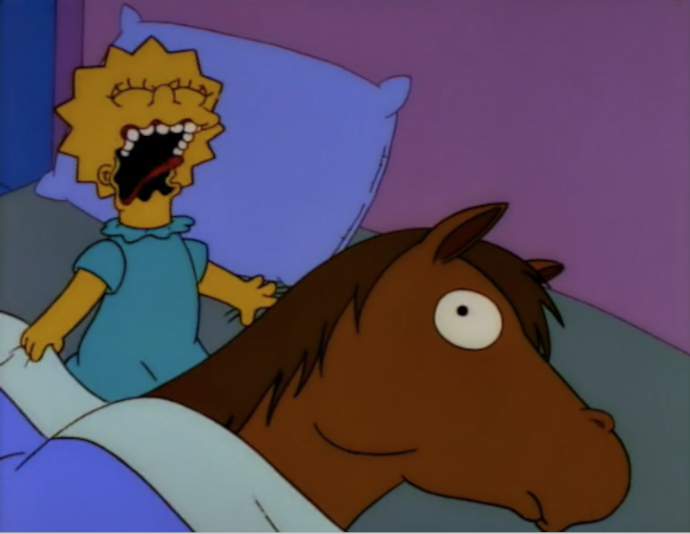
Movies referenced: 2001: A Space Odyssey and The Godfather
The beginning of "Lisa's Pony" (season 3, episode 8) mimics the legendary opening sequence of Stanley Kubrick's 2001: A Space Odyssey.
Dawn rises over a prehistoric landscape of rocks and apes, where a strange monolith appears. One particularly Homer-like monkey decides to take a nap on the extraterrestrial structure... and wakes up from his movie-inspired dream at the power plant.
The episode follows Homer as he works two jobs to pay for Lisa's pony and buy back her love. Homer lets the pony sleep in Lisa's bed to surprise her with the gift—which is actually kind of horrifying to wake up to.
When she pulls back the covers to reveal a horse's head, Groening makes a clear reference to an infamous scene from The Godfather.
11. Principal Charming
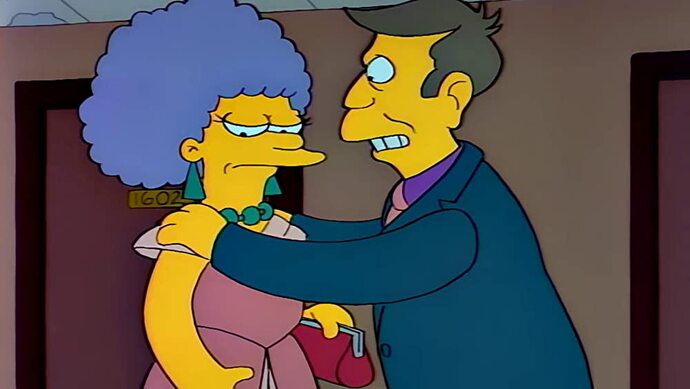
Movies referenced: Vertigo and Gone With the Wind
When Principal Skinner falls for Marge's chain-smoking sister Patty in "Principal Charming" (season 2, episode 14), he does everything he can to win her over. This includes taking her to the top of a bell tower, offering a sweeping view of Springfield for his proposal.
That bell tower is based off a key location in Alfred Hitchcock's Vertigo, where Scottie is faced with his fear of heights time and again by the looming staircase.
After Patty bids Skinner "Good night, sweet principal" (invoking "Good night, sweet prince" from Shakespeare's Hamlet), Skinner proclaims that "Tomorrow is another school day!" As he says this, Skinner's silhouette is visible against the reddening sky, referencing Gone With the Wind.
10. Treehouse of Horror V
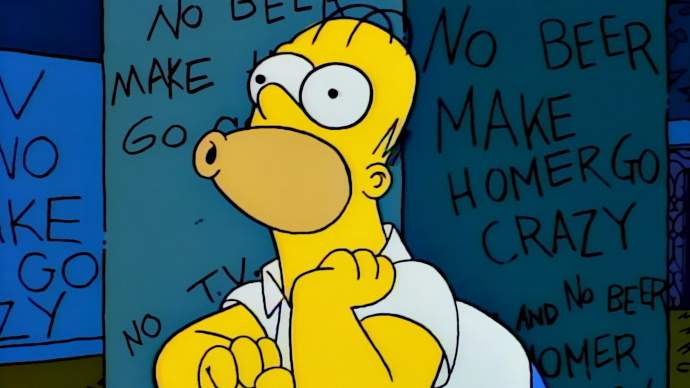
Movies referenced: The Shining
The "Treehouse of Horror" episodes are all Halloween specials made up of multiple short, spooky stories—ones that have no consequence on the loose yet overarching plot of the show. This makes them a great source for horror movie references!
In "Treehouse of Horror V" (season 6, episode 6), one of the plots is a parody of the Stanley Kubrick classic The Shining.
"No TV and no beer make Homer go crazy!" Homer chants after Mr. Burns confiscates his two favorite things in the world. He scribbles these words all over the walls in a maddened frenzy, just like Jack in The Shining ("All work and no play makes Jack a dull boy.")
The episode also takes place in Mr. Burn's haunted lodge, reminiscent of the movie's iconic isolated hotel.
9. Lisa's Substitute
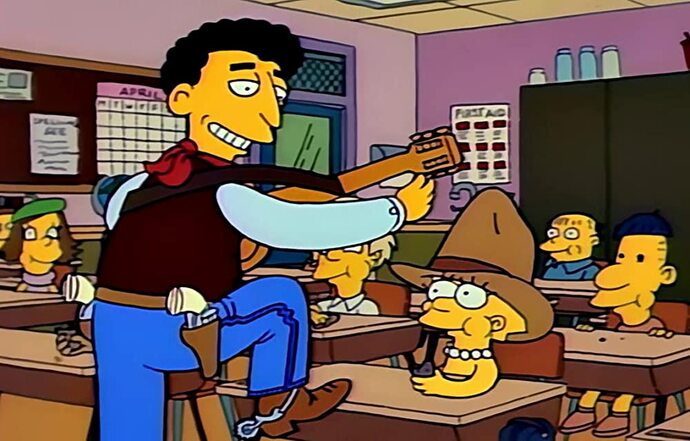
Movies referenced: The Graduate
"Lisa's Substitute" (season 2, episode 19) is a fan favorite of the show, guest starring Dustin Hoffman as Mr. Bergstrom.
When Miss Hoover goes on medical leave, Lisa's new substitute teacher is everything Homer lacks: smart, emotional, and attentive. Lisa quickly develops a crush on this new father figure, leaving her heartbroken when Mr. Bergstrom departs for Capital City.
At one point, Mrs. Krabappel puts her leg on the table in direct reference to Mike Nichols' The Graduate. "Mrs. Krabappel, are you trying to seduce me?" Mr. Bergstrom asks, just as Hoffman's character does in the film.
The scene only lasts a few minutes, but we love it because it's really Hoffman speaking! The creators of The Simpsons simply couldn't miss the golden opportunity.
8. Treehouse of Horror VIII
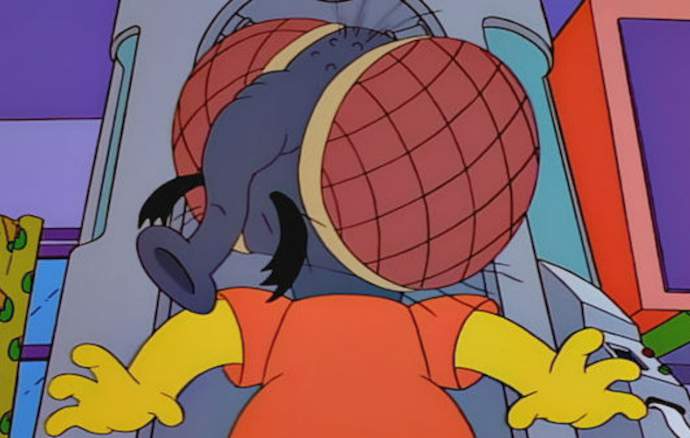
Movies referenced: The Fly
Another one of our favorite "Treehouse of Horror" references is in the eighth installment (season 9, episode 4) featuring a short story inspired by the 1958 horror flick The Fly (which was later remade in 1986).
After Homer buys a teleporting machine from a yard sale, he uses it all around the house. Santa's Little Helper enters the portal with Snowball II, making the two pets merge together. This gives Bart an idea: to mix his DNA with a fly's DNA to become some sort of fly-superhero.
Suffice it to say, it doesn't go exactly to plan. Bart is left with the tiny body of an insect, while the fly's magnified head sits atop his old body.
7. Simpsoncalifragilisticexpialad'ohcious
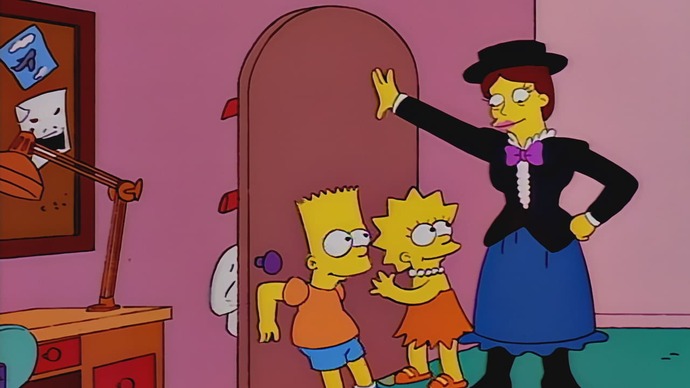
Movies referenced: Mary Poppins
This one's a pretty obvious reference, introducing the new (brief) side character of Shary Bobbins, a caricature of Julie Andrews' Mary Poppins.
As in the 1964 Disney film, "Simpsoncalifragilisticexpialad'ohcious" (season 8, episode 13) has the Simpsons family hiring an English nanny when their dysfunctionality goes too far.
Shary Bobbins sings and sweeps her way through the parody episode, but the second she leaves, everything crumbles again. Unlike the unbreakable perfection of the real Poppins, Shary is beaten down by the Simpsons' antics and spirals into a pit of drunken depression.
6. Marge on the Lam
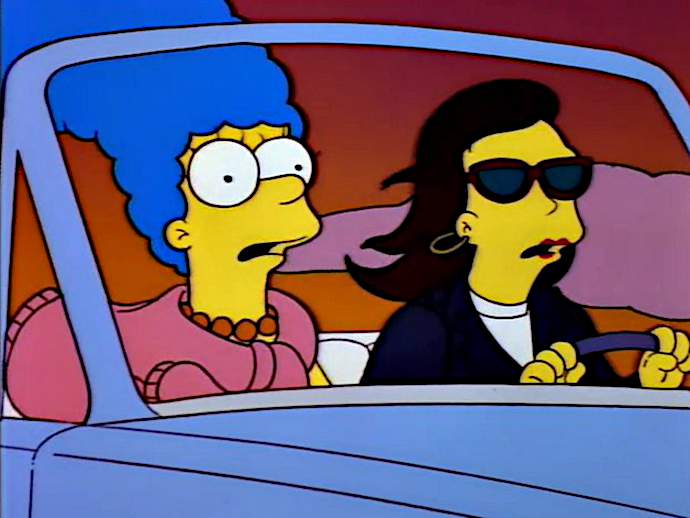
Movies referenced: Thelma & Louise
We love Marge, but she's too much of a doormat/do-gooder at times.
When Homer gets his arms stuck in a vending machine at work and can't go to the ballet with her, Marge invites her new neighbor Ruth Powers instead. A feisty single mother who loves flirting with danger, Ruth teaches Marge how to shoot pistols, drive fast, and let loose.
The duo become partners in petty crime, mirroring the two polar-opposite friends in Thelma & Louise. "Marge on the Lam" (season 5, episode 6) isn't the only reference to Ridley Scott's feminist classic—Marge watches the movie when soaking at Rancho Relaxo in "Homer Alone" (season 3 episode 15).
5. Mr. Lisa Goes to Washington
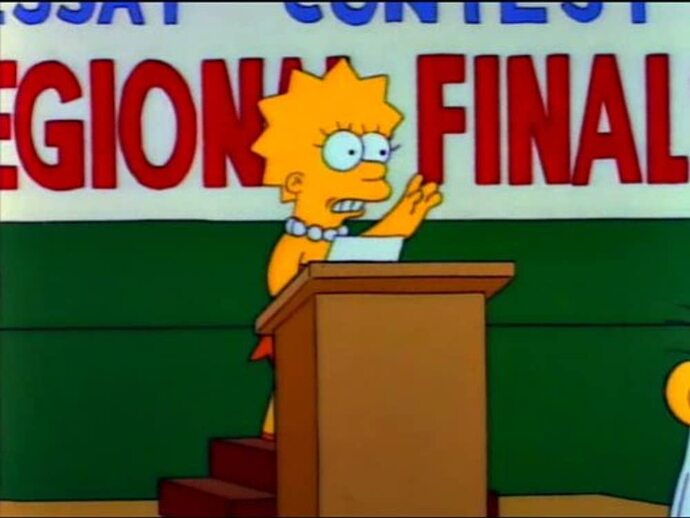
Movies referenced: Mr. Smith Goes to Washington
Hmmm... I wonder what this episode title could be a reference to? Frank Capra's 1939 political comedy-drama Mr. Smith Goes to Washington is, unsurprisingly, the inspiration behind "Mr. Lisa Goes to Washington" (season 3, episode 2).
In this episode, Lisa wins a trip to Washington D.C. for her patriotic essay, but becomes disillusioned with her country after witnessing a bribe. Lisa appeals to Abraham Lincoln's statue at the Lincoln Memorial in the same way that Jeff Smith does.
Both Lisa and Mr. Smith are disheartened by America's political shortcomings, but are determined to invoke change. The film is also referenced in "Mr. Spritz Goes to Washington" (season 14, episode 14) but not nearly as well as it was here.
4. Rosebud
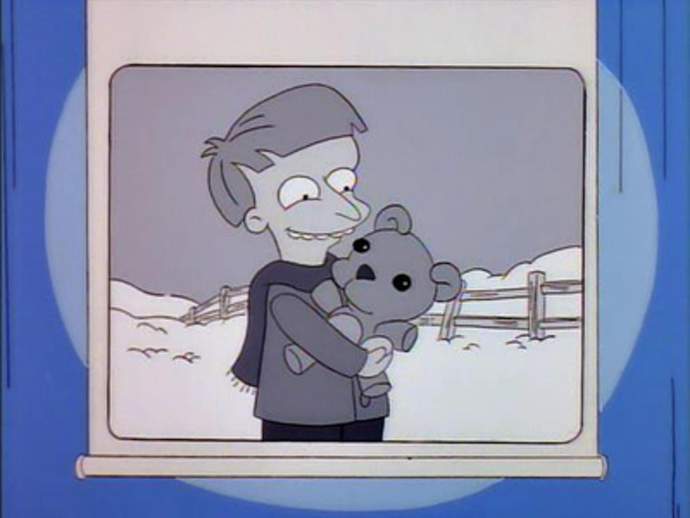
Movies referenced: Citizen Kane
The word "rosebud" is the main driving force for the movie Citizen Kane, now considered one of the greatest films ever made—and directly referenced in this episode (season 5, episode 4).
In The Simpsons' version, it's Mr. Burns who represents the movie's rich newspaper tycoon Charles Foster Kane. Though it isn't his dying word like in Citizen Kane, Mr. Burns utters "Bobo" during a nightmare, which is the show's equivalent of "rosebud."
In a flashback, Burns recalls his childhood home where he dropped his beloved teddy bear Bobo, never to be seen again. Like Kane, he leaves his snowy hometown to live a life of riches. The now-old Burns and Kane both lament their loss of boyish innocence, calling for their lost toys.
3. Bart's Friend Falls in Love
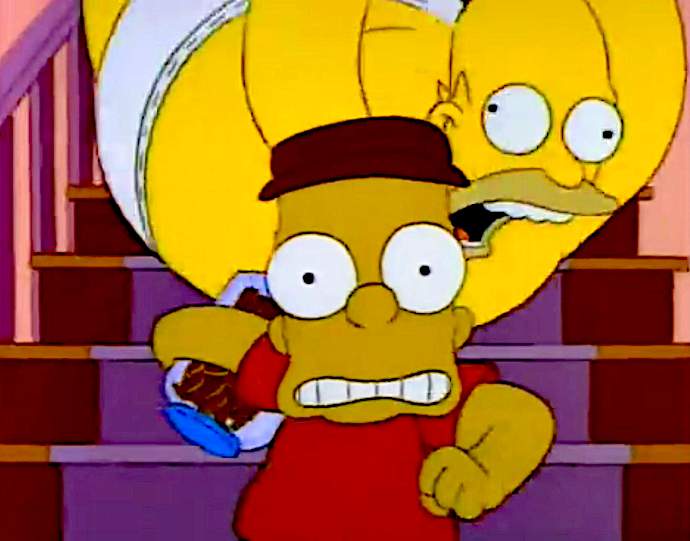
Movies referenced: Raiders of the Lost Ark and Casablanca
The opening sequence to "Bart's Friend Falls in Love" (season 3, episode 23) is a comical masterpiece, harking back to Steven Spielberg's beloved adventure flick Raiders of the Lost Ark.
The Indiana Jones spoof places Bart as the treasure-hunting archaeologist, who steals a jar of money and is chased by Homer, who rolls like a boulder after him. John Williams' famous score is also played throughout the scene.
But that's not all! The end of the episode references another classic movie: when Bart and Milhouse visit Samantha at her new school, it echoes the war drama Casablanca, a film that's constantly saluted throughout the 33 seasons of The Simpsons.
2. A Streetcar Named Marge
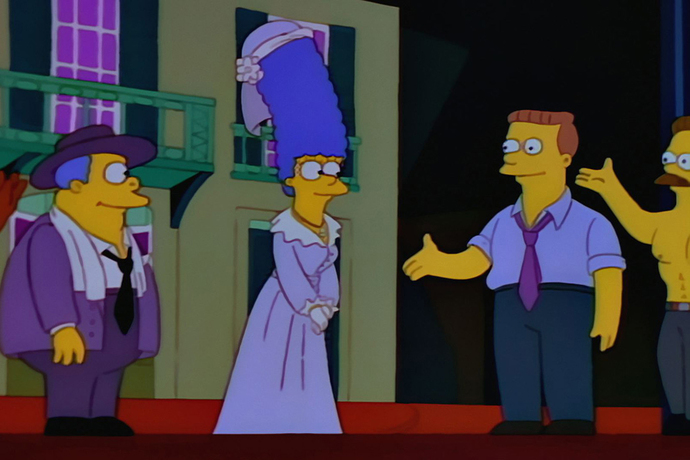
Movies referenced: A Streetcar Named Desire and The Great Escape
Technically, A Streetcar Named Desire was originally a play by Tennessee Williams in 1947. And it's this play that the members of Springfield act out in their own stage adaptation.
However, Elia Kazan's 1951 movie is arguably more popular than the play, and it's what comes to most viewers' minds when watching "A Streetcar Named Marge" (season 4, episode 2).
Feeling underappreciated at home, Marge auditions for the play and is cast as the troubled protagonist Blanche DuBois. Opposite her, Ned Flanders is surprisingly cast as the chiseled, brutish Stanley.
While all this is going on, Maggie is stuck in day care. Her carer, Ms. Sinclair, is a cruel woman who confiscates Maggie's beloved pacifier. Her toddler angst is punished with solitary confinement, with nothing to do except bounce a ball against the wall.
This reference to The Great Escape is carried throughout Maggie's plotline: she leads a rebellion among all the tots, breaks into the locker of pacifiers, and sets all the babies free. All the while, Elmer Bernstein's iconic theme tune marches her on.
1. Bart of Darkness
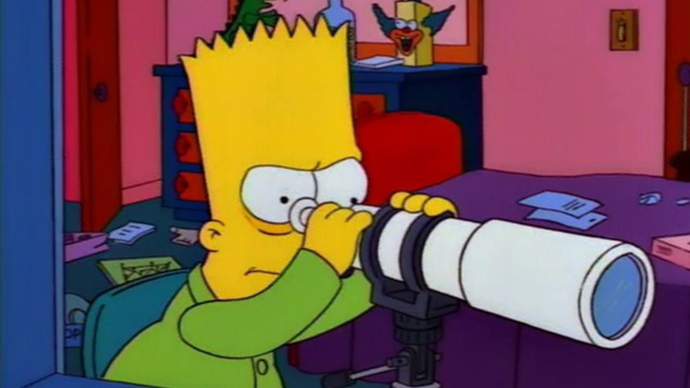
Movies referenced: Rear Window
"Grace, come here. There's a sinister-looking kid I want you to see!" It's spoken by the cartoon version of Jimmy Stewart from his window.
That sinister-looking kid sits beside a telescope with his leg in a cast, much like the character in Alfred Hitchcock's Rear Window. That sinister-looking kid is Bart, a reincarnation of the Hitchcockian protagonist with his leg bandaged and telescope out.
When the Simpsons family gets a swimming pool for the summer, Bart is forced to miss out because of a broken leg. Bart spends his time people-watching his neighbors, growing obsessive and weird about it.
Like Stewart's character, Bart thinks he witnesses a murder through the window and sends Lisa out to investigate, potentially putting her in danger. "Bart of Darkness" (season 6, episode 1) is also a nod to Joseph Conrad's 1899 novella Heart of Darkness.
